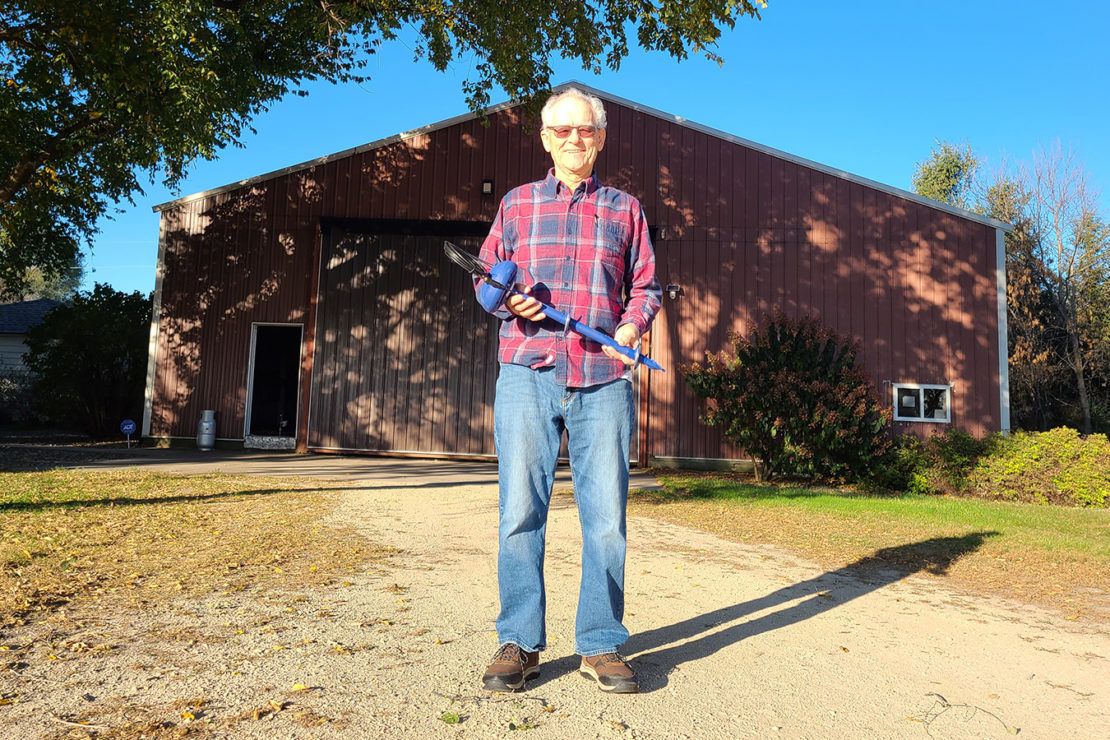Data-driven irrigation management supports farmers and the environment

Environmental Initiative recently helped Dakota County gather input from farmers, community members, and other key stakeholders to shape a voluntary plan to protect groundwater from agricultural pollution as part of the County’s overall groundwater protection efforts. Excess nitrate, pesticides, and chlorides from agriculture can contaminate groundwater sources of drinking water. Dakota County’s Agricultural Chemical Reduction Effort is a voluntary plan to reduce these pollutants from drinking water.
Chuck Louis helps farmers manage their irrigation, protecting drinking water at the same time. Dakota County is promoting efforts like this as part of the County’s new drinking water protection plan.
Louis retired from farming, but he’s still active. For almost a decade he’s been selling soil probes and providing agronomy advice around irrigation and nutrient management.
His goal is to help farmers create an even yield across their fields.
Through the company Crop X, formerly Crop Metrics, Louis, along with his partner Mark Kladar, helps farmers establish variable rate irrigation and nutrient management – which involves altering amounts of fertilizer and water applied throughout farm fields, based on factors like weather and soil composition. Precision can increase profitability of an operation by optimizing inputs and increasing yields.
“It’s not necessarily adding more nutrients, but we’re going to take some nitrogen and sulfur away from higher organic soils and put it on your lower organic soils,” Louis said. “We’re trying to raise the yields on the poor soils and maintain yields on the good.”
Louis helps farmers determine when to water, when to fertilize, and how much of each should be used. This can save farmers money from unnecessary inputs and reduce the chances of excess nutrients leaching into groundwater.
Louis’ advice is driven by real-time data. He installs soil moisture probes in fields to monitor soil moisture content. The probes provide periodic updates that Louis uses, along with weather forecasts, to provide advice to farmers regarding irrigation and nutrient practices.
The updates can be a big help when farmers are making decisions, so Louis checks soil probes and weather forecasts daily during irrigation season and sends advice and updates to farmers over text.
“For a lot of operators, it takes a lot of stress off them to have me making those decisions,” Louis said. “I always tell them it’s your field, you can do what you want, but this is what I suggest.”
Farmers have been finding Louis through word of mouth from others who have found success. Louis said the hardest part is convincing a farmer to put a probe in the soil, but once they see the benefit, they often will add more probes throughout their fields. However, upfront costs can be a barrier for many. Along with the soil probes, the field must be mapped, and Louis must visit the field to test the soil and create irrigation management zones. Typical upfront costs can range from $20-$40 per acre with specialized systems running much higher, according to Louis. Costs averaged over three to five years run two to four bushels per acre per year on corn crops. Financial assistance through the Natural Resources Conservation Service (NRCS) can help reduce the burden on the farmer. Louis has seen the average return on investment from irrigation management range between 20-50% for most systems that participate in cost share programs.
“This can help farmers increase their return on investment and it makes the decision-making a little less stressful for them,” Louis said.
Irrigation water management can also help protect groundwater quality. Dakota County is promoting the practice as part of their voluntary Agricultural Chemical Reduction Effort. University of Minnesota Extension research estimates that when farms using irrigation switch to irrigation water management, nitrogen loss can be reduced by up to 60%.
“Irrigation water management is not currently a widely adopted practice in the county, but it has great potential to help farmers and the environment,” Ashley Gallagher, senior resource conservationist with Dakota County Soil and Water Conservation District said. “We appreciate all the farmers who are trying to fine tune their irrigation. Some farmers track and schedule irrigation on their own with free or low-cost tools, others prefer to have someone provide recommendations. We hope to see the percentage of farms doing irrigation water management grow in the next decade. We are always looking at ways to help farmers access irrigation water management tools.”